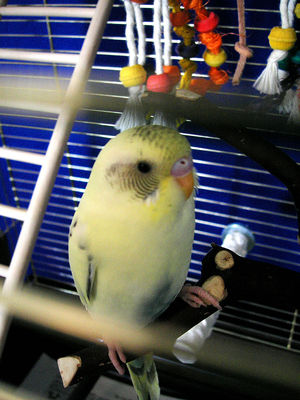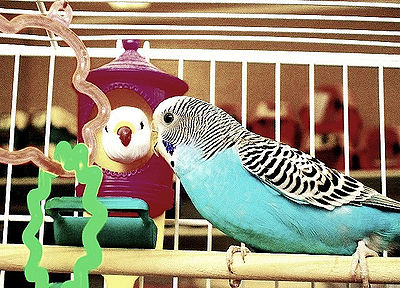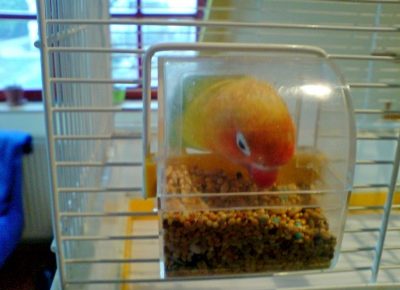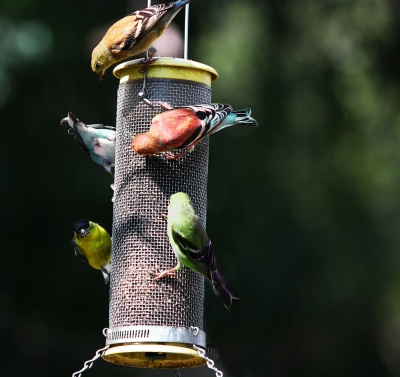 |
In the wild, birds encounter perches with various size, shape, texture, and flexibility, requiring them to constantly adjust their grip. In this way, they exercise all of the muscles in their feet and legs. Bird perches for captive birds should provide the same exercise, to prevent sore, stiff, and even arthritic legs.
Bird perches are inexpensive (and you can even make your own), so it is a good idea to provide your bird with more than one perch. Each perch should have a different texture.
Your bird needs a mix of regular shapes – round, oval, rectangular, or flat – and irregular shapes – those with varying tapers, knobs, branches, etc. Some birds occasionally prefer to sit with their toes extended on a flat surface, so you might provide a wide perch such as a board or wire platform. However, these flat surfaces should never be the bird’s only option.
Birds need a rigid perch since it is comfortable for sleeping and a soft perch to provide a soft landing when hopping. Lovebirds, conures, parrots, parakeets, and cockatiels all prefer perches made of softwoods. A perch made of soft plastic hose or a hard perch covered in soft material can serve this purpose.
Perches should be placed so that they maximize exercise and don’t inhibit a bird’s movement or cause him/her injury. Perches should not be placed directly over water or food dishes. They must be checked regularly for any loose strings or frayed areas so your bird won’t accidentally swallow any pieces or have a claw become entangled.
If you want to make your own perch, use wood from unsprayed trees. Don’t use toxic woods such as oak, pine, and cherry. Branches from most fruit and nut trees or willows are the safest. Cut the branches to fit the cage – they can attach to both sides or only one side. Inspect them for any insects or insect eggs. Clean them thoroughly by scrubbing them with dish detergent. Rinse the branches well and dry in the sun or in the oven for half an hour at 200-250°F. Peteducation.com recommends heating the branches for 45 minutes in a 200 degree oven to kill any insects. Cool before placing in the cage. Natural perches made from wood can also be purchased from some vendors.
A mineral perch is an excellent choice for your bird’s cage. Besides using a mineral perch to groom nails and beak, your bird benefits from the minerals.
You can attach branches to the cage with light chains or rope which allows them to swing when your bird hops on. In their natural habitats, birds perch on branches that slope and swing in the breeze.
The exercise and activity your bird gets from a variety of perches is good for his/her health, particularly if your bird spends lots of time in the cage.
My cockatiel, Tweety, has a new cage. One of the wooden dowels that served as a perch kept falling down. I promptly went into my garden and chose a sturdy branch from the apple tree. I then cut it to fit the cage, cleaned it as directed and placed it in the cage. It takes Tweety a while to get used to new things, but I’m sure he’ll enjoy his new perch once he tries it out.



